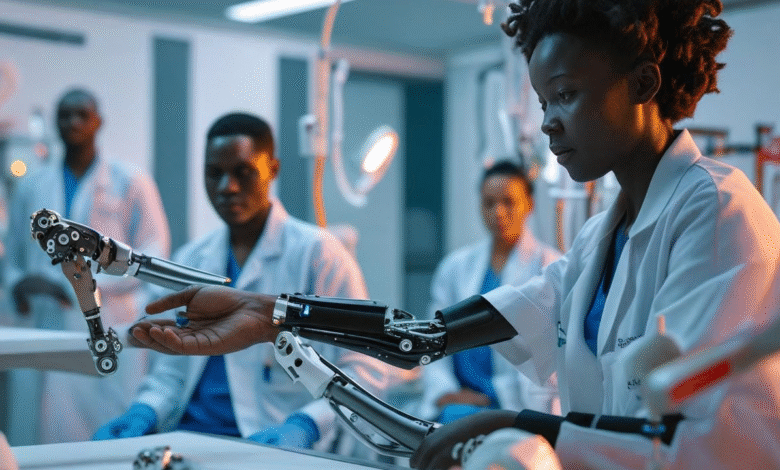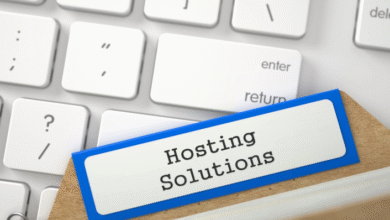IoT in Smart Prosthetics and Rehabilitation Devices: Enhancing Quality of Life

Medical devices within the scope of the IoT (Internet of Things) are changing the future of patient care for those requiring prosthetics or rehabilitation needs. The application of IoT in Healthcare allows for devices to cover connectivity, intelligent monitoring and real-time feedback that are designed for the purpose of restoring mobility and improving quality of life. The implications of adding sensor capacity, connectivity modules, and analytics within prosthetic and rehabilitation devices will provide more personalized, adaptive, and responsive, solutions that have been previously unreachable.
There are globally connected prosthetic limbs, which can adjust to a user’s level of activity, and remotely monitored rehabilitation devices tracking outcomes. IoT is creating the opportunity to link participants and clinicians together. Healthcare IoT enables improved communication, functionality, and more transformational care to fit personal needs and sustain long term outcomes and health & wellbeing.
The Role of IoT in Modern Healthcare
Today’s health care is becoming more reliant on connected devices to provide continuous data, monitor patients outside of the clinical environment and support preventive care. The IoT promotes:
- Continuous monitoring of patient health.
- Personalized interventions.
- Early detection of complications.
For prosthetics and rehabilitation, this translates to devices that can self-adjust in the moment, physicians can communicate with their patients, and devices that affirm motivation through feedback and gamification.
How Smart Prosthetics and Rehabilitation Devices Are Evolving
Prosthetics and rehab devices used to be mainly mechanical and reactive. With IoT, prosthetics and rehab devices can be designed with digital intelligence, embedding functionality like predictive adjustments, machine learning-based insights, and automated reporting of movement and activity.
The evolution of prosthetics and rehab devices is happening because of:
- Advancements in miniaturized sensors.
- Utilization of low-power wireless communication protocols.
- Integration of cloud-based analytics and artificial intelligence.
Understanding IoT in Healthcare Devices
Healthcare products for prosthetics and rehabilitation that use IoT typically comprises:
- Sensors: For tracking movement, pressure, muscle engagement, and the environment
- Connectivity modules: Like Bluetooth, Wi-Fi, or a cellular technology for data sending and data receiving
- Analysis systems: For turning raw sensor data into usable insights
Without all three integrated together, it is not possible to have “smart” features!
What Makes a Prosthetic or Rehab Device ‘Smart’?
A smart device is one that:
- Connects with the user as they perform actions
- Engages with cloud and mobile interface
- Enables the potential for remote data monitoring
- Implements adaptive algorithms to enhance performance.
Key IoT Components: Sensors, Connectivity, and Data Analytics
Sensors take inputs related to gait, joint positioning, muscle activity, or completing a rehab exercise. Connectivity enables data inputs to be transmitted to a secure cloud-based environment for consideration by a clinician. Analytics enables personalized adjustments and automated reports of progress while allowing for continuous turn-taking engagement and performance tuning of devices.
IoT in Smart Prosthetics
Real-Time Motion and Activity Tracking
IoT sensors provide a basically non-intrusive way to understand metrics such as stride length, walking speed, and rhythm or symmetry of gait which can help improve:
- Comfort and efficiency by adjusting reported information,
- Considerations regarding possible irregular use of functional components posited by a clinician.
Adaptive Prosthetics with AI and IoT Integration
The addition of intelligence into prosthetic devices also allows:
- Automated changes in resistance or support,
- Learning positive outcomes for terrain or activity.
Combining IoT with AI Development Services yields prosthetics that progress with the user while providing a personalized experience and maintenance-based predictions.
Remote Monitoring for Physicians and Therapists
Through connected applications clinicians can:
- See overall daily activity, along with usage and movement trends
- Send recommendations
This approach helps reduce clinic visits and preserves high-quality care.
Case Examples of Smart Prosthetic Solutions
Examples may include microprocessor-controlled knees that automatically adjust torque settings, and hand prosthetics that modify grip force based on the object’s weight, all facilitated by IoT sensing and real-time data analytics.
IoT in Rehabilitation Devices
Wearable IoT Devices for Physical Therapy
Smart bands and motion sensors are used to track range of motion, repetitions, and adherence to home exercise plans during rehabilitation sessions.
Remote Patient Monitoring and Progress Tracking
Clinicians can:
- Monitor patients’ compliance while performing exercises at home.
- Identify noncompliance with recovery plans and can intervene accordingly.
Smart Exoskeletons to Aid Movement and Recovery
IoT-embedded exoskeletons:
- Assist patients with movement through well-measured support.
- Modify the assistance based on fatigue and biomechanics.
Personalized Rehabilitation Programs Powered by IoT
Data and output from IoT devices are fed into platforms that build out personalized plans, which are often augmented using AI Development, and:
- Produce changes based on the exercise level of difficulty.
- Provide feedback loops to facilitate increased learning.
Remote Patient Monitoring and Progress Tracking
Clinicians can:
- Track compliance with at-home exercises.
- Detect deviations from recovery plans for timely intervention.
Smart Exoskeletons for Mobility and Recovery
IoT-enabled exoskeletons:
- Assist movement with precise mechanical support.
- Adjust aid based on fatigue levels and biomechanics.
Personalized Rehabilitation Programs Powered by IoT
Data from IoT devices feed into personalization engines, often supported by AI Development, to:
- Adapt exercise difficulty.
- Offer feedback loops for improvement.
Benefits of IoT-Enabled Prosthetics and Rehabilitation
Enhanced Mobility and Independence
Smart devices restore autonomy through personalized adaptation to the individual’s lived environment and capabilities.
Engaged Patients with Improved Outcomes
Patients are encouraged and maintained within rehab programs through gamified rehabilitation programs and user interaction via applications.
Objective Data for Quick Recovery
Ongoing monitoring will allow subtle improvements or regressions to be observed which lends to quicker more accurate corrections from practitioners.
Increased Affordability, Ability to Access
Less reliance on in-person appointments decreases costs and increases access to care for patients, especially in rural communities or those who have mobility constraints.
Challenges and Considerations
Data Security Concerns
Medical device data is required to be secured by encryption mechanisms, while compliant with HIPAA, GDPR, or other regulations.
Connectivity And Reliability Factors
Devices located in low-bandwidth environments may need to process at the device edge rather than communicate with the system or allow for some offline functionality.
Overall Development and Maintenance Cost
Smart systems typically include complex hardware-software integration and require monitoring and updates with some frequency.
Training and Adoption of Users
Patients and clinical users must be trained to use the device properly to drive intended results.
Future of IoT in Prosthetics and Rehabilitation
Integration with AI, AR/VR, and Robotics
Integrating the Internet of Things (IoT) with robotics allows for more intelligent control of prosthetics, as well as the potential to use AR/VR to accelerate and facilitate rehabilitation in immersive training environments.
Cloud and Edge Computing for Real-Time Analytics
Edge computing gets around latency for real-time responses, whereas cloud infrastructures support analytics and scaling on a large scale.
Personalized Predictive and Preventative Care Models
IoT will enable devices not just to respond but to also predict and prevent issues.
Final Thoughts
The Internet of Things (IoT) is transforming our perspective on prosthetics and rehabilitation devices by delivering adaptive, connected, and personalized care to patient populations worldwide. This evolution creates a greater sense of independence, speeds up the recovery process, and enhances clinical decision making. We are in a transition from passive, mechanical devices to intelligent, interactive companions.
It is vital for organizations looking to build compliant, safe, and innovative IoT solutions for health care to partner with a Healthcare Software Development Company. The partnership with a Healthcare Software Development services provider provides medical device providers with technical expertise, regulatory insight, and understanding of user needs to build truly innovative devices for enhancing life.



